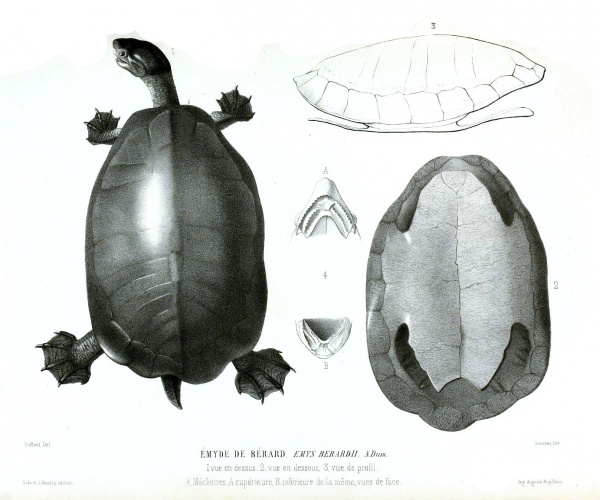Facts About Central American river turtle
The Central American river turtle, often referred to as the hickatee or tortuga blanca, is a unique and fascinating species. It is the sole surviving member of its family, Dermatemydidae, and inhabits the Atlantic waterways of Central America, specifically in southern Mexico, Belize, and Guatemala.
These turtles are quite large and spend the entirety of their lives in aquatic environments. They adhere to a vegetarian diet, consuming figs, flowers, and leaves from nearby trees. Primarily nocturnal, they only emerge from the water to lay eggs.
Breeding for these turtles occurs during two busy seasons. The main breeding period spans from September to December, with a secondary season from January to February. A female can lay up to four clutches of eggs per year, with each clutch containing between 2 and 20 eggs, though it is rare to find more than 15 eggs at a time.
Unfortunately, the Central American river turtle faces significant threats. It is heavily hunted and is now classified as Critically Endangered. In the United States, it is listed as Endangered. To aid in their protection, conservationists have taken measures such as listing the species on CITES Appendix II, which helps regulate their export, and enforcing local anti-hunting laws.
In Belize, efforts to conserve these turtles include initiatives like the Hickatee Conservation Forum and Workshop, organized by the Turtle Survival Alliance (TSA). A key project within these efforts is a breeding program at the Belize Foundation for Research and Environmental Education (BFREE), where hatchlings are raised in captivity with the aim of releasing them back into the wild. This program is vital for replenishing the turtle population and reducing the pressures from hunting.
Thanks to these conservation efforts, there is hope that the Central American river turtle can be rescued from the brink of extinction and continue to thrive in its natural habitat.

 United States
United States